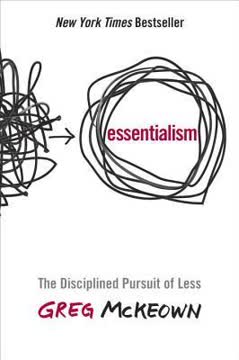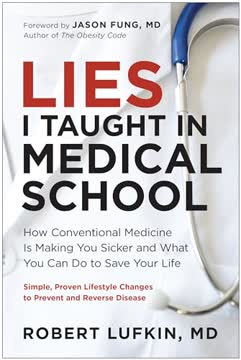Key Takeaways
1. Sugar is ubiquitous and hidden in plain sight
There are fifty-six names for sugar; by choosing different sugars as the fifth, sixth, seventh, and eighth ingredients on the Nutrition Facts ingredients list, they can rapidly add up to number 1.
Sugar is everywhere. It's in our bread, yogurt, salad dressings, and even in seemingly savory foods like sausages and pasta sauces. The food industry has become adept at hiding sugar under various names, making it difficult for consumers to identify and avoid excessive sugar intake. This ubiquity of sugar contributes significantly to the overconsumption of calories and the development of chronic metabolic diseases.
The impact is severe. High sugar consumption is linked to obesity, type 2 diabetes, heart disease, and other metabolic disorders. The average American consumes about 22 teaspoons of added sugar per day, far exceeding the recommended limits of 9 teaspoons for men and 6 for women. This excess sugar intake is not just from obvious sources like desserts and sodas, but from the hidden sugars in everyday processed foods.
Vigilance is key. To combat this, consumers need to be aware of the many names for sugar and carefully read ingredient lists. Some common aliases include:
- High fructose corn syrup
- Evaporated cane juice
- Dextrose
- Maltose
- Barley malt
- Rice syrup
2. A calorie is not just a calorie: The biochemistry matters
A calorie is a measurement of energy (a matter of physics), not a value judgment on where that energy goes (a matter of biochemistry).
Biochemistry trumps physics. The traditional view of weight management—calories in versus calories out—is oversimplified. Different nutrients are processed differently by our bodies, leading to varying metabolic effects. For instance, 100 calories from sugar will have a different impact on your body than 100 calories from protein or fiber.
Insulin is key. The hormone insulin plays a crucial role in how our bodies process and store energy. Foods that spike insulin levels, particularly refined carbohydrates and sugars, promote fat storage and can lead to insulin resistance over time. This is why a diet high in added sugars and refined carbs can be particularly detrimental to health, even if the total calorie count is the same as a diet rich in protein, healthy fats, and complex carbohydrates.
Nutrient density matters. Beyond just calories, the nutrient content of food is crucial for overall health. Foods with similar calorie counts can have vastly different nutrient profiles:
- A 100-calorie serving of almonds provides healthy fats, protein, fiber, and various micronutrients
- A 100-calorie serving of soda provides only sugar and no beneficial nutrients
3. The food industry manipulates our choices for profit
If you won't buy it, they won't sell it.
Profit drives decisions. The food industry's primary goal is to maximize profits, not to promote public health. This often leads to the creation and marketing of highly processed, addictive foods that are cheap to produce but detrimental to our health. These foods are engineered to hit the "bliss point"—the perfect combination of sugar, salt, and fat that keeps us coming back for more.
Marketing tactics are pervasive. The industry spends billions on marketing, especially targeting children. Some tactics include:
- Using cartoon characters to promote sugary cereals
- Placing unhealthy snacks at eye level in stores
- Sponsoring sporting events to associate junk food with health and fitness
- Creating "health halos" around products by using buzzwords like "natural" or "low-fat"
Awareness is our defense. Understanding these tactics can help us make more informed choices. By recognizing that our food environment is designed to encourage overconsumption of unhealthy foods, we can be more mindful of our choices and actively seek out healthier options. This might involve shopping the perimeter of grocery stores where fresh, whole foods are typically located, or preparing more meals at home where we have control over ingredients.
4. Fiber is the unsung hero of nutrition
Fiber is the "stealth nutrient," one of the most valuable items in nature.
Fiber's dual role. Fiber plays two crucial roles in our diet. First, it acts as a natural barrier in our intestines, slowing down the absorption of nutrients and helping to prevent blood sugar spikes. Second, it increases the transit rate of food through our digestive system, promoting feelings of fullness and preventing overeating.
Processed foods lack fiber. Many processed foods are stripped of their natural fiber content to increase shelf life and improve texture. This removal of fiber not only reduces the nutritional value of the food but also makes it easier to overconsume calories. For example:
- A whole apple contains about 4 grams of fiber
- Apple juice, even when unsweetened, contains virtually no fiber
Fiber-rich foods promote health. Increasing fiber intake can have numerous health benefits:
- Improved digestive health
- Better blood sugar control
- Reduced risk of heart disease
- Increased feelings of fullness, aiding in weight management
- Potential reduction in the risk of certain cancers
5. Reading food labels requires decoding skills
Reading a food label is like reading a road map in Japanese.
Labels can be misleading. Food labels are often designed to highlight positive aspects of a product while obscuring less desirable elements. Understanding how to interpret these labels is crucial for making informed food choices. Some key points to consider:
- "Sugar-free" doesn't mean healthy—it may contain artificial sweeteners or other additives
- "Low-fat" often means higher in sugar to compensate for flavor
- Serving sizes may be unrealistically small to make calorie counts appear lower
Focus on ingredients. The ingredient list, ordered by quantity from most to least, can be more informative than the nutrition facts panel. Key things to look for:
- Whole, recognizable ingredients
- Minimal added sugars (look for the various names of sugar)
- Absence of artificial additives and preservatives
Be wary of health claims. Front-of-package health claims are often marketing tools rather than indicators of nutritional value. Claims like "heart-healthy" or "immunity-boosting" should be viewed skeptically and verified by examining the full nutritional profile of the product.
6. Processed food isn't going away, but we can make better choices
Even with all its deficiencies, toxicities, and addictions, processed food isn't going away.
Convenience is king. In our fast-paced society, processed foods offer convenience that many find indispensable. Rather than advocating for complete elimination, which is unrealistic for most, the goal should be to make informed choices within the realm of processed foods.
Not all processed foods are equal. There's a spectrum of processed foods, from minimally processed (like bagged spinach or roasted nuts) to ultra-processed (like sugary cereals or microwaveable dinners). Opting for less processed options when possible can make a significant difference in nutritional intake. Some strategies include:
- Choosing whole grain breads over white bread
- Opting for plain yogurt and adding your own fruit instead of pre-flavored varieties
- Selecting unsweetened versions of products and adding sweetness yourself if needed
Read labels critically. When selecting processed foods, pay close attention to:
- Sugar content: Aim for products with less than 5g of added sugar per serving
- Fiber content: Choose options with higher fiber content when possible
- Ingredient list: The shorter and more recognizable, the better
7. Real food is the best defense against chronic diseases
All real food is inherently good. It's what they do to the food that's not.
Whole foods are protective. Unprocessed or minimally processed whole foods—fruits, vegetables, whole grains, lean proteins, and healthy fats—provide a complex array of nutrients that work synergistically to promote health. These foods are generally:
- Rich in fiber
- High in micronutrients
- Free from added sugars and unhealthy additives
Chronic diseases are linked to diet. Many of the chronic diseases plaguing modern society, including type 2 diabetes, heart disease, and certain cancers, are strongly influenced by diet. A diet based on whole foods can help prevent and even reverse some of these conditions by:
- Reducing inflammation
- Improving insulin sensitivity
- Supporting a healthy gut microbiome
- Providing antioxidants and other protective compounds
Simple swaps make a difference. Gradually replacing processed foods with whole food alternatives can have a significant impact on health:
- Swap sugary breakfast cereal for oatmeal with fresh fruit
- Replace chips with raw vegetables and hummus
- Choose whole fruit over fruit juices
8. The government won't protect us: We must take action ourselves
The chances that the White House or Congress will put any limits on the food industry are virtually nonexistent.
Regulatory capture is real. The food industry has significant influence over the government agencies meant to regulate it. This results in policies that often prioritize industry profits over public health. Examples include:
- Weak standards for labeling added sugars
- Generous subsidies for crops used in processed foods (e.g., corn for high-fructose corn syrup)
- Lax regulations on food marketing, especially to children
Education is key. In the absence of strong government protection, individuals must educate themselves about nutrition and food industry practices. This includes:
- Learning to read and interpret food labels
- Understanding the health impacts of different nutrients
- Recognizing marketing tactics used by food companies
Consumer power can drive change. While individual choices may seem small, collective consumer action can influence the food industry. By consistently choosing healthier options and avoiding heavily processed foods, consumers can:
- Send a message to food companies about demand for healthier products
- Support smaller companies producing healthier alternatives
- Potentially influence larger companies to reformulate their products
9. Breakfast and lunch are battlegrounds for healthy eating
Breakfast is considered by most nutrition experts to be the most important meal of the day.
Start strong with breakfast. A nutritious breakfast sets the tone for the day, helping to regulate hunger hormones and stabilize blood sugar. However, many common breakfast foods are high in sugar and refined carbohydrates. Better choices include:
- Eggs with whole grain toast and avocado
- Greek yogurt with berries and nuts
- Oatmeal with cinnamon and sliced almonds
Pack lunch for control. Bringing lunch from home allows for better control over ingredients and portion sizes. This is particularly important for children, as school lunches often fall short nutritionally. Tips for healthy packed lunches:
- Include a source of protein, complex carbohydrates, and healthy fats
- Add a variety of colorful vegetables
- Avoid sugary drinks and opt for water or unsweetened beverages
Plan ahead for success. Meal planning and preparation can make healthy eating easier during busy weekdays:
- Prep ingredients or entire meals on weekends
- Keep healthy snacks readily available
- Have a list of quick, nutritious meal ideas for hectic days
10. Eating out frequently leads to loss of control over nutrition
If you eat out or bring in, you lose control. You don't know the composition of your food, and you don't control the portion size.
Restaurant meals are often problematic. When dining out, we often consume more calories, unhealthy fats, and added sugars than we would at home. This is due to:
- Large portion sizes
- Hidden ingredients (e.g., added sugars in sauces)
- Preparation methods that prioritize taste over health (e.g., excessive use of oils)
Strategies for healthier dining out:
- Research menus in advance and choose restaurants with healthier options
- Ask for dressings and sauces on the side
- Choose grilled or baked options over fried
- Share entrees or take half home for later
Cook at home more often. Preparing meals at home allows for complete control over ingredients and portion sizes. Benefits include:
- Better understanding of what you're eating
- Ability to adjust recipes to personal health needs
- Opportunity to involve family in meal preparation, promoting healthy habits
11. Investing in good food now saves on healthcare
Last updated:
FAQ
What's "Sugar Has 56 Names: A Shopper's Guide" about?
- Focus on sugar in foods: The book by Robert H. Lustig explores the pervasive presence of sugar in processed foods and its impact on health.
- Guide for consumers: It serves as a practical guide for shoppers to identify hidden sugars in food products and make healthier choices.
- Educational resource: The book educates readers on how to read food labels effectively to avoid sugar-laden products.
- Health implications: It discusses the link between sugar consumption and chronic metabolic diseases like diabetes and obesity.
Why should I read "Sugar Has 56 Names: A Shopper's Guide"?
- Improve health awareness: The book provides valuable insights into the hidden sugars in everyday foods, helping readers make informed dietary choices.
- Practical shopping tips: It offers strategies for navigating supermarkets and selecting healthier food options.
- Combat misinformation: The book challenges common misconceptions about sugar and processed foods, promoting a more informed public.
- Empowerment through knowledge: By understanding food labels and sugar content, readers can take control of their health and well-being.
What are the key takeaways of "Sugar Has 56 Names: A Shopper's Guide"?
- Hidden sugars: Many processed foods contain hidden sugars under various names, contributing to health issues.
- Reading labels: Learning to read and understand food labels is crucial for identifying and avoiding added sugars.
- Health risks: Excessive sugar intake is linked to metabolic syndrome, obesity, and other chronic diseases.
- Consumer power: Making informed choices can influence the food industry to offer healthier options.
How does Robert H. Lustig suggest reading a food label?
- Check serving size: Be aware of serving sizes, as they can mislead consumers about the actual sugar content.
- Identify sugars: Look for different names of sugar in the ingredients list, as they can be hidden under various terms.
- Focus on carbohydrates: Understand the difference between total carbohydrates, dietary fiber, and sugars to assess the product's health impact.
- Avoid trans fats: Check for partially hydrogenated oils, which indicate the presence of harmful trans fats.
What are the "56 names for sugar" mentioned in the book?
- Variety of names: The book lists 56 different names for sugar used in food products, such as high-fructose corn syrup, cane sugar, and agave nectar.
- Purpose of variety: These names are used to disguise the presence of sugar in foods, making it harder for consumers to identify.
- Impact on health: Consuming products with hidden sugars can lead to overconsumption and health issues.
- Consumer awareness: Knowing these names helps consumers make better choices and avoid excessive sugar intake.
What is the "Stealth War" described in "Sugar Has 56 Names"?
- Unseen battle: The "Stealth War" refers to the ongoing struggle between consumers and the food industry over hidden sugars in products.
- Health stakes: The stakes include consumers' health, well-being, and financial costs due to sugar-related diseases.
- Industry tactics: The food industry uses marketing and product formulation to increase sugar consumption without consumer awareness.
- Consumer defense: The book aims to arm consumers with knowledge to fight back and make healthier choices.
How does "Sugar Has 56 Names" address the issue of metabolic syndrome?
- Definition: Metabolic syndrome is a cluster of conditions, including high blood pressure, high blood sugar, and abnormal cholesterol levels.
- Link to sugar: The book explains how excessive sugar intake contributes to the development of metabolic syndrome.
- Mitochondrial overload: It discusses how sugar overloads mitochondria, leading to poor energy processing and metabolic diseases.
- Prevention strategies: The book offers guidance on reducing sugar consumption to prevent metabolic syndrome.
What strategies does Robert H. Lustig recommend for shopping healthier?
- Shop the perimeter: Focus on the outer aisles of the supermarket where fresh produce, meats, and dairy are typically located.
- Avoid processed foods: Limit purchases of packaged and processed foods that often contain hidden sugars.
- Read labels carefully: Learn to identify and avoid products with high sugar content and harmful additives.
- Plan meals: Prepare a shopping list based on healthy recipes to avoid impulse buys of sugary snacks.
What are the best quotes from "Sugar Has 56 Names" and what do they mean?
- "A calorie is not a calorie": This quote challenges the notion that all calories are equal, emphasizing the importance of nutrient quality over quantity.
- "Sugar is toxic in high dose": It highlights the dangers of excessive sugar consumption and its role in chronic diseases.
- "Eat 'real' food": Encourages readers to choose whole, unprocessed foods over packaged products with hidden sugars.
- "The rule of business is: if you won’t buy it, they won’t sell it": Stresses the power of consumer choice in influencing the food industry.
How does "Sugar Has 56 Names" relate to Robert H. Lustig's other work, "Fat Chance"?
- Companion guide: "Sugar Has 56 Names" serves as a practical shopping guide complementing the scientific insights in "Fat Chance."
- Focus on sugar: Both books emphasize the detrimental effects of sugar on health and the importance of reducing intake.
- Educational approach: While "Fat Chance" provides scientific evidence, "Sugar Has 56 Names" offers actionable advice for consumers.
- Shared goal: Both works aim to empower readers to make healthier dietary choices and challenge the food industry's practices.
What are the "self-administered weapons of mass destruction" in the book?
- Eight changes: The book identifies eight changes in the food supply that contribute to chronic diseases, including added sugars and trans fats.
- Industry-driven: These changes are driven by the food industry's interests, not consumer health.
- Nutrient imbalances: The book discusses the lack of fiber, omega-3s, and micronutrients, and the excess of harmful substances like sugar.
- Consumer impact: Understanding these changes helps consumers make informed choices to protect their health.
How does "Sugar Has 56 Names" propose to influence food policy?
- Public health focus: The book advocates for policies that prioritize public health over industry profits.
- Label transparency: It calls for clearer food labeling to help consumers make informed choices about sugar content.
- Regulation of sugar: The book suggests implementing a Dietary Reference Intake (DRI) for sugar to limit its addition to foods.
- Consumer advocacy: Encourages readers to demand healthier options and support policies that promote nutritional transparency.
Review Summary
Sugar has 56 names receives mixed reviews, with an average rating of 3.93/5. Readers appreciate the book's insights on interpreting nutrition labels and identifying hidden sugars. Many find it informative and helpful for making better food choices. Some praise its concise nature, while others wish for more content. The book is particularly valued for its list of sugar's alternative names and its critique of current labeling practices. However, some readers find the food list section less useful, especially those outside the U.S.
Similar Books










Download PDF
Download EPUB
.epub digital book format is ideal for reading ebooks on phones, tablets, and e-readers.







